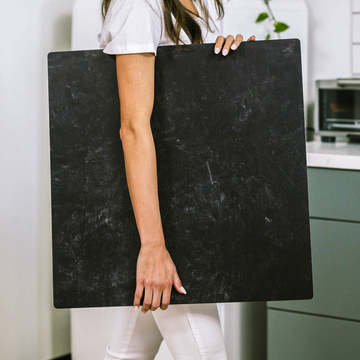Ever noticed how some product photos just seem to "pop" more than others? That secret often lies not in the camera or lighting, but in what's literally supporting your product - the humble backdrop board. As someone who has spent years obsessing over every technical detail of product photography, I've come to appreciate these unsung heroes of our craft.
Why Backdrop Boards Deserve Your Attention
While we photographers love discussing our latest camera bodies or lighting setups, backdrop boards rarely get the spotlight they deserve. Yet these seemingly simple surfaces dramatically influence your final image in ways that might surprise you.
The Science Behind the Surface
Not all backdrop boards are created equal. Their material composition directly affects your images in significant ways:
HDPE (High-density polyethylene) backdrops offer exceptional durability and water resistance - perfect for those coffee spills during beverage shoots! However, their molecular structure creates a micro-texture that subtly alters how light bounces off reflective products. I've noticed this especially when shooting jewelry or cosmetics packaging, where those tiny specular highlights make all the difference.
Engineered wood composite boards present a different challenge. Their fibrous structure absorbs different wavelengths of light unevenly. I call this "spectral non-uniformity" - it's why sometimes your white balance seems slightly off despite perfect camera settings. This property requires specific adjustments during post-processing to achieve true color accuracy.
The Hidden Physics of Light Reflection
One technical aspect I rarely see discussed is the surface reflectivity coefficient (SRC) of backdrop boards. This value fundamentally changes how your lighting setup interacts with your product.
For example, backdrops with a moderate SRC (around 0.3-0.4) create what I call a "proximal fill effect" - they essentially become a soft secondary light source that gently illuminates the underside of your products. This natural fill is invaluable when photographing ceramics or food items where preserving shadow detail creates that three-dimensional feel.
The Critical Corner: Where Vertical Meets Horizontal
The junction where vertical and horizontal backdrop surfaces meet might seem trivial, but it's actually one of the most technically challenging aspects of product photography. This transition zone creates complex patterns of light and shadow that can make or break your shot.
Quality backdrop systems feature a smooth, curved transition that maintains what engineers call "C1 continuity." In plain English? No visible seam or sharp corner. This seamless curve allows light to flow naturally around your product, eliminating those harsh shadow lines that scream "amateur hour" and require extensive retouching.
Beyond What The Eye Can See
Here's something fascinating: backdrop boards interact with light beyond the visible spectrum, affecting your digital images in subtle but important ways.
Some lower-quality backdrop materials contain dyes that fluoresce under UV light. While invisible to our eyes, digital sensors partially detect this effect, creating slight color shifts. I've seen identical products shot on different backdrops look noticeably different despite identical lighting and camera settings - a phenomenon I term "metameric backdrop shift."
Microclimate Matters for Macro Work
For those of you who shoot small products requiring focus stacking or long exposures, your backdrop material creates its own microclimate that can affect image sharpness.
Dense materials like stone or thick acrylic maintain more stable temperatures, reducing tiny air currents near the surface. These otherwise invisible convection currents can cause micro-movements during long exposures - potentially ruining that perfect macro shot of jewelry or watch mechanisms where even sub-pixel movements matter.
Choosing the Right Backdrop for Your Product
When selecting backdrop boards for your next shoot, consider:
- Product reflectivity: Highly reflective products generally pair best with lower-SRC (more matte) surfaces to control unwanted reflections.
- Color interactions: Remember that your backdrop color interacts with your product in complex ways. Neutral isn't always best - sometimes a complementary color brings out product details more effectively.
- Material stability: For precision macro work, choose denser, thermally stable materials.
- Transition quality: For professional results, invest in systems with smooth vertical-to-horizontal transitions.
Conclusion: Backdrops as Precision Tools
Far from mere backgrounds, backdrop boards are sophisticated technical tools that influence every aspect of your product photography. Understanding these nuances transforms your approach from simply placing products on surfaces to precisely engineering your visual environment.
The next time you're setting up that perfect product shot, remember - your backdrop isn't just supporting your product; it's actively contributing to your visual story through carefully engineered physical properties.
What backdrop materials have you found work best for your product photography? Share your experiences in the comments below!



